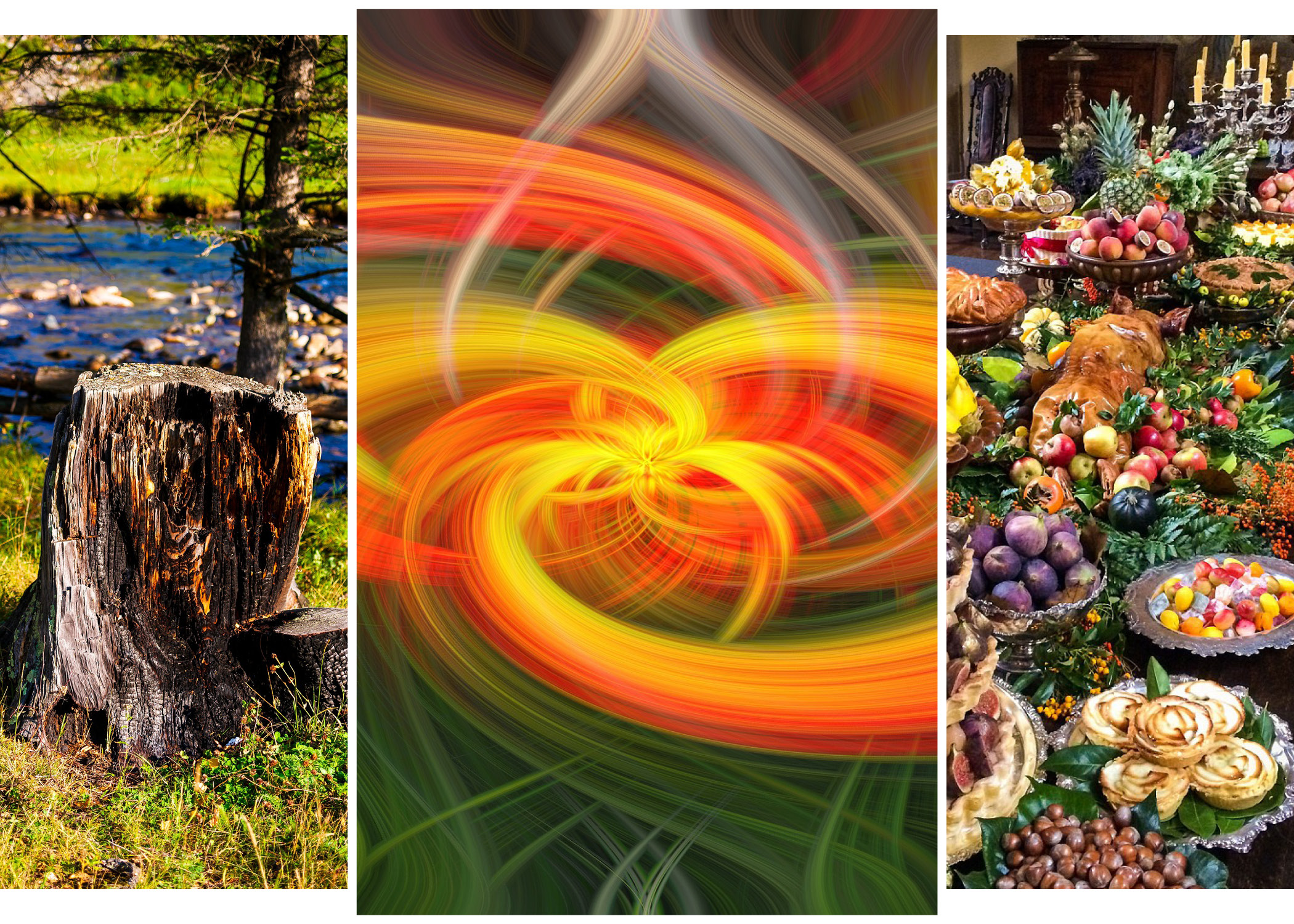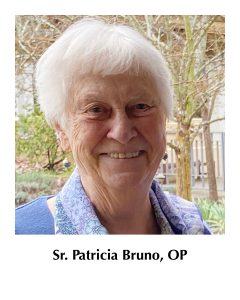- All
- Wisdom
- We Stand on Their Shoulders
- Vocation
- Uncategorized
- Stories Seldom Heard
- Spirituality
- Social Justice
- Prayer
- Peace
- Oneness
- Love
- Letting Go
- Lent
- Joy
- Inspirational Images
- Hope / Healing
- Holy Week
- Gratefulness
- God's Presence
- General News Stories
- Forgiveness
- Finding God
- Faith
- Easter
- Dominican Saints
- Discipleship
- Courage
- Christmas
- Catholic Sisters Week
- Care of the Earth
- Blessing
- Beauty
- Advent
- #justiceOPportunity
Isaiah: The Prophet of Hope
Sr. Patricia Bruno, OP

I know many of you cannot attend daily Eucharist. However, the daily readings for Advent are especially inspiring and powerful. The Prophet Isaiah has many hope-filled words and images that can lift up our spirits and deepen our hope. Why not integrate into your Advent practice a daily reading of the Isaiah passages that appear in the first reading during Mass? You can find the daily readings on the web at USCCB.org.
The daily Advent readings stand in stark contrast to the heavy warnings we heard from the Prophet Isaiah in the Sunday readings. It is important to keep these warnings in mind because they are not only for the benefit of those living in Jerusalem in 740 BC, but they are a warning for us, as well. Advent is a time to be vigilant to the invisible God whose presence we meet every day. Isaiah is a man of faith: a faith that enables him to speak the truth while at the same time seeing through the darkness and proclaiming without hesitancy words of hope. Similarly, Tagore, the Indian poet/philosopher, offers us a poetic image that reflects Isaiah’s and our Advent faith as we too wait attentively during these cold days of war and growing economic insecurity. “Faith is like the bird who feels the light and sings while the dawn is still dark.”
Hope looms large in the Book of Isaiah, but the vision isn’t painted in bold strokes. Rather, one needs to squint a little to read between the lines to feel the warmth of the dawning light while it is still dark. It helps to conceptualize three interrelated themes as though a triptych, a three-panel painting where the central panel is most prominent. To create this triptych, I’ve used passages from Isaiah that populate the daily readings across the entire season of Advent.
To begin, imagine the central panel that m ight include open space and a sense of movement. Soft, yet energetic colors swirl to express the Spirit’s energy, delight, and creativity and illustrate Isaiah’s words:
ight include open space and a sense of movement. Soft, yet energetic colors swirl to express the Spirit’s energy, delight, and creativity and illustrate Isaiah’s words:
God’s word does not return empty.
Comfort, give comfort to my people… Speak tenderly to the heart of Jerusalem.
Though the grass whither and the flowers wilt, the Word of our God stands forever.
Looking to the side panels, on the left are regenerative scenes from nature that illustrate God’s promise to renew and restore the face of the earth. You might see a split, seemingly dry tree stump. Many of us have seen this image in our backyards or a nearby field. Isaiah reminds us that what looks dead is often in a state of dormancy. After the tree is cut down the tap roots are at work. If left unimpeded the tree will eventually sprout new shoots. With our earthly eyes, we often can’t observe the underground life of the tree and its continual struggle for life beneath the surface of the soil. But we have witnessed the results. The tap roots slowly dig deep into the soil to seek a water source. Old, dead tree stumps with soft centers are often fertile ground for tender shoots. From Isaiah:
A shoot shall sprout from the stump of Jesse, and from his roots, a bud shall blossom.
On the left-side panel, you might also see full-flowing streams of water. The Israelites lived in a desert and without water, there can be no life. Thus, God’s change of heart is expressed in the renewal of the land. As the rain gives life to the seeds and soaks the soil into fertility, God’s people experience God’s forgiveness. When the full streams of water flow from the lofty hills and mountains, greening the parched earth, the people know God has heard their prayers of repentance.
God comes with vindication… the steppe will rejoice and bloom.
Streams will break forth in the desert and rivers in the steppe.
God’s forgiveness is visible and palpable. We might not live in the deserts of Israel, but we too yearn for the return of the bounty and balance that was described in the Book of Genesis as the Garden of Eden. Poetically speaking this vision is the restoration of that idyllic, mythical garden.
Now, on the right-side panel, you’ll see imagery of feasting, both the array of food and a crowd of happy participants.
The Lord of hosts will provide for all peoples a feast of rich food and choice wines.
When people follow God’s laws there are no shadow figures huddling in the corners or begging at the city gates. Even though everyone is invited to the table, there is enough for all because the food is shared.
God humbles those in high places.
There is no ranking, no privileged or underprivileged diners. All are included and because of that, the celebration not only fills hungry stomachs but also satisfies the deep longings of the heart. Joy and delight beam forth through the faces, postures, and gestures of those gathered.
What do we learn, pondering the whole of these triptych images? We learn from the central image that God’s creative word offers compassion, forgiveness, and restoration. It shows what restoration would look like if humans paid attention.
The deaf shall hear the words of the book; and out of gloom and darkness, the eyes of the blind shall see.
We would catch a glimpse into the good results.
Tyrants will be no more and the arrogant will be gone.
And we would see that fullness of understanding is followed by the fullness of health.
Those who err in spirit shall acquire understanding and those who find fault shall receive instruction.
God “gives strength to the fainting and the weary ones will soar like the eagles.”
* * *
Whether it is to be fed when we are hungry, to be emotionally nourished when we have felt excluded, or to be brought to full health and strength when we have felt weary, it is part of the vision of full restoration—not just for a few, but for everyone! When people refocus their attention on God, when they lift their eyes on high and see who has created everything, life begins to change.
Isaiah goes even further. He connects the central panel with the side panels: the resources God provides in nature and the human feast.
When we are in right relationship with ourselves and others, the earth flourishes. When we are out of sync with one another through violence and war, our earth suffers. When the water becomes polluted so does the food we eat. When the land is without water, food is limited and only a few receive the meager awards of the harvest. When the sky is filled with toxic gases, we too feel the effects of the loss of oxygen and clean air. When nature is cut back and fields plowed to make room for malls and highways the balance of nature is offset. We with the fields and the flocks of the air grieve the losses.
It is true that the health of humanity and the health of nature go hand in hand. It is true that the healing and restoration of right relationships among humans affect the healing of the whole universe in which we are housed. Isaiah might be an ancient prophet, but in our world, his words take on a new energy and focus. His visions deepen our hope and strengthen our convictions while we wait for God’s promises to be fully realized.
This waiting time we call Advent gives us pause to reflect on our lives and what is happening around us. It gives us a chance to make some new choices about how we can birth hope in our lives and the lives of others. Our actions and attitudes have important repercussions. When we give bread to another, it feeds real hunger. When we attentively listen to another, it feeds the soul. When we work on issues of justice with people of goodwill striving for the common good, we help bring about the restoration of the land and the people.
Hope rests in trusting and actively believing that God can do great things even in the “even if” parts of our lives. Even if there is greed in the world, there are many people sharing their food and their resources with those who are in need. Even if there is a growing fear of violence and continued escalation of war, there are people everywhere choosing the path of reconciliation and active non-violence. Even if we experience the power of international corporations, there is a large and ever-growing movement of international socially responsible investors whose voices cannot be shut out of corporate board rooms or political caucuses.
Even though many of us can’t attend Mass every day, I hope this article will encourage you to spend some time using the daily Mass readings for your own personal reflections and prayer. Perhaps by doing so we will become like the bird who feels the light and sings while the dawn is still dark – true Advent people!
